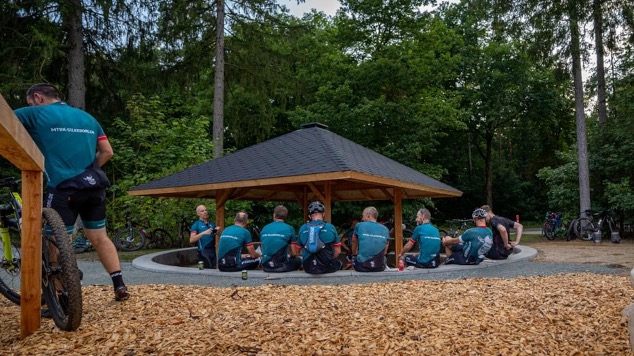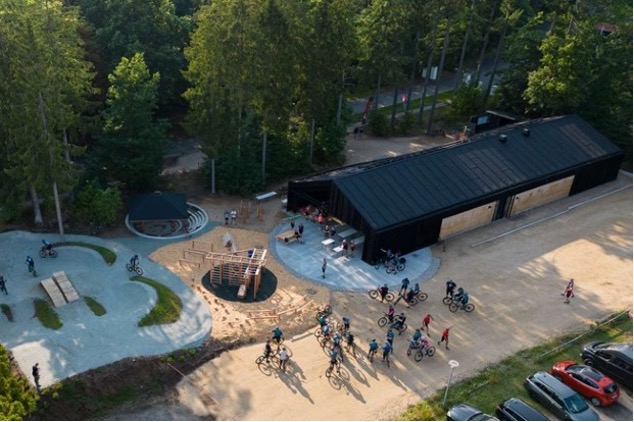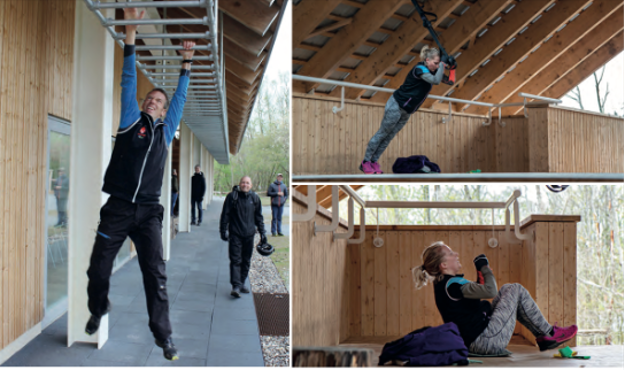



Los Centros de Senderos actúan como espacios físicos que aumentan y mejoran el acceso a actividades físicas en la naturaleza, contribuyendo al bienestar físico y mental.
Sus ubicaciones, cuidadosamente elegidas y próximas a la naturaleza (bosques, agua y senderos), ayudan a establecer lugares de encuentro y puntos de partida de actividades deportivas al aire libre, de libre acceso y abiertos las 24 horas del día. Como algunos están situados cerca de zonas urbanas, también constituyen una puerta de entrada de los entornos urbanos a los naturales.
Su combinación como sede de un club todo en uno, proveedor de instalaciones de servicios y espacio de reunión y entrenamiento, los convierte en lugares ideales para que los utilicen asociaciones deportivas locales, así como grupos o individuos no afiliados. De este modo, se crea un espacio para la socialización dentro y entre los deportes y se fomenta la creación de relaciones entre los usuarios y con las asociaciones deportivas locales.
Facilitar el acceso a instalaciones de servicio para la participación en actividades deportivas al aire libre (por ejemplo, surtidores de bicicletas y estaciones de limpieza; espacio cubierto para entrenamientos; equipos de entrenamiento funcional (escaleras, barras, TRX, etc.); espacio de almacenamiento para equipos; y vestuarios/duchas/aseos). Como lugares de préstamo de equipos (por ejemplo, mapa y brújula, esquís de ruedas, tablas de SUP, etc.), los centros también animan a la gente a probar nuevas actividades en la naturaleza de forma asequible.
- La elección del emplazamiento: los centros de senderos deben estar cerca de entornos naturales propicios para las actividades al aire libre. Construirlos en la periferia de las zonas urbanas, pero cerca de la naturaleza, proporciona puertas de entrada ideales a la naturaleza. El análisis de las oportunidades recreativas, las infraestructuras, el terreno, etc. ayuda a determinar las ubicaciones ideales.
- Determinar correctamente las funciones y servicios que deben prestar los centros de senderos para satisfacer mejor las necesidades de los usuarios.
- La organización de talleres con las partes interesadas permitió debatir y determinar las necesidades de los usuarios, así como las funciones que debían ofrecer los centros de senderos para satisfacerlas. De este modo se configuraron los diferentes diseños de los centros de senderos y se ayudó a determinar las instalaciones básicas que debían ofrecer, así como las instalaciones adicionales específicas para las necesidades o intereses de la comunidad.
- Los talleres participativos también garantizaron que los centros de senderos ofrecieran acceso a actividades y zonas que pudieran resultar atractivas para los usuarios, tanto para los que practican actividades al aire libre como para los que pudieran estar interesados en descubrir nuevas actividades al aire libre basadas en la naturaleza.
- La elección de ubicar algunos centros cerca de zonas urbanas también fue importante para mejorar el acceso de la población urbana a la naturaleza.
- Facilitar información sobre actividades como el senderismo, el atletismo y el ciclismo (longitud, dificultad, tipo de terreno, etc.) es útil para animar a la gente a realizar actividades deportivas en la naturaleza, sobre todo a quienes estén menos familiarizados con la zona o con una actividad concreta.